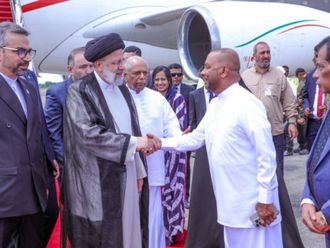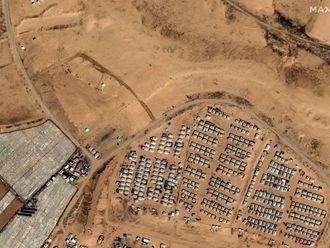Washington: Syrian regime forces have fired at least a half-dozen short-range ballistic missiles at rebel groups in the north of the country over the past several days, according to US officials, a potentially significant escalation of a civil war that has killed more than 40,000 people.
US officials and the group Human Rights Watch also alleged Wednesday that Syrian government forces are dropping incendiary devices similar to napalm weapons on rebel fighters in populated areas. The officials described the tactics as acts of desperation as rebels gain momentum in the nearly two-year-old fight to oust President Bashar Al Assad.
“How desperate do you need to be to launch a ballistic missile against your own people in your own country?” a senior Obama administration official said. “It’s the last tool you would use in a counterinsurgency” because of the risk of civilian casualties, particularly in a conflict in which most of the fighting has occurred in urban areas.
Details were scarce on the launch site of the missiles or whether they caused any casualties. Victoria Nuland, a spokeswoman for the State Department, said only that “we have . . . seen missiles deployed.” Administration officials, who spoke on the condition of anonymity to discuss intelligence findings, declined to specify the types of missiles used or the exact location of the strikes.
A NATO official in Brussels told the Reuters news agency, “Allied intelligence, surveillance and reconnaissance assets have detected the launch of a number of unguided, short-range ballistic missiles inside Syria this week. Trajectory and distance traveled indicate they were Scud-type missiles.”
A second senior Obama administration official said that as recently as two weeks ago, US intelligence had dismissed reports of missile strikes by the Syrian government as unfounded, but that “this time, they say it was surface-to-surface missiles of some sort.” The bulk of Syria’s substantial missile arsenal consists of Russian- and North Korean-made Scuds, which have a range of up to 480 kilometres. There have been reports that Syria modified one variant to boost its reach to 700 kilometres.
Scuds, most infamously used by the Iraqi government of Saddam Hussein during the 1991 Gulf War, are notoriously inaccurate, although modifications since then are said to have improved their capabilities. In the worst attack of the 1991 war, 28 U.S. troops were killed when a Scud hit their barracks in Dhahran, Saudi Arabia.
US-made Patriot missiles were effectively used against Scuds in the Gulf War, and NATO has agreed to deploy Patriot batteries in Turkey, which shares a 550-mile-long border with Syria.
The use of Scuds or similar missiles could increase the risk of civilian casualties because they could easily stray into densely populated areas even if fired at rebel outposts owing to their inaccuracy. As fighting continued in the suburbs of Damascus, the Syrian Interior Ministry said three bombs, at least one of them in a car, had collapsed walls of the ministry building and killed at least five people. The bombs have been a trademark of extremist groups that Western governments say are increasingly infiltrating the insurgency.
- Washington Post












